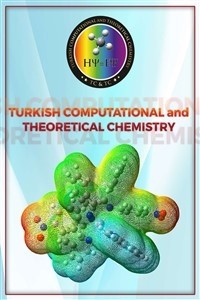An Optimization and Pharmacokinetic Studies of some Thymidine Derivatives
An Optimization and Pharmacokinetic Studies of some Thymidine Derivatives
Thymidine is a predecessor of nucleotides that forms DNA and plays a significant role in cell metabolism and as a co-enzyme. Most of the thymidine analogues have remarkable antiviral activity due to structural functions and are globally used as antiviral drugs. Modification of the hydroxyl (-OH) group of thymidine by acylation may causes changes in the property of thymidine which is investigated in this study. Herein, we relate the optimization of thymidine and its acylated analogues applying density functional theory (DFT) with B3LYP/3-21G level theory to demonstrate their thermal, frontier molecular orbital, the density of states (DOS) and molecular electrostatic potential (MEP) properties. Pharmacokinetic parameters are also enumerated to investigate absorption, metabolism, oral toxicity, and carcinogenicity of thymidine and its modified derivatives.
___
- Sax, R.J. Lewis, The following list of chemicals known or believed to be teratogens is drawn primarily from dangerous properties of industrial materials, 7th Ed., Wiley, 1988.
- A.A. Krayevsky, K.A. Watanabe, Modified Nucleosides as Anti-AIDS Drugs: Current Status and Perspectives, Bioinform, Moscow, (1993) p-211.
- S. Tabata, M. Yamamoto, H. Goto, et al., Thymidine Catabolism as a Metabolic Strategy for Cancer Survival. Cell Report 19 (2017) 1313-1321.
- R.A. Gaussian09, 1, M.J. Frisch, G.W. Trucks, H.B. Schlegel, G.E. Scuseria, M.A. Robb, J.R. Cheeseman, G. Scalmani, V. Barone, B. Mennucci, G.A. Petersson et al., Gaussian, Inc, Wallingford CT., 2009.
- A.D. Becke, Density-functional exchange-energy approximation with correct asymptotic behaviour. Physical Review A 38 (1988) 3098-3100.
- C. Lee, W. Yang, R. G.Parr, Development of the colle-Salvetti correlation-energy formula into a functional of the electron density. Physical Review B 37 (1988) 785-789.
- R.G. Pearson, Absolute electronegativity and hardness correlated with molecular orbital theory. Proceedings of the National Academy of Sciences 83 (1986) 8440-8441.
- F. Cheng, W. Li, Y. Zhou, J. Shen, Z. Wu, G. Liu, et al (2012) admetSAR: A comprehensive source and free tool for assessment of chemical ADMET properties. Journal of Chemical Information and Modelling 52 (2012) 3099-3105.
- N. Cohen, S. W. Benson, Estimation of heats of formation of organic compounds by additivity methods. Chemical Reviews 93 (1993) 2419-2438.
- E.J. Lien, Z.R. Guo, R.L. Li, C.T. Su, Use of dipole moment as a parameter in drug-receptor interaction and quantitative structure-activity relationship studies. Journal of Pharmaceutical Sciences 71 (1982) 641-655.
- M.M. Hoque, M.A. Halim, M.G. Sarwar, M. Khan, Palladium‐catalyzed cyclization of 2‐alkynyl‐N‐ethanoyl anilines to indoles: synthesis, structural, spectroscopic, and mechanistic study. Journal of Physical Organic Chemistry 28 (2015) 732-742.
- R.G. Parr, Z. Zhou, Absolute hardness: unifying concept for identifying shells and subshells in nuclei, atoms, molecules, and metallic clusters. Accounts of Chemical Research 26 (1993) 256-258.
- M.L. Amin, P-glycoprotein inhibition for optimal drug delivery. Drug Target Insights 2013 (2013) 27-34.
- P. Politzer, J.S. Murray, Molecular electrostatic potentials and chemical reactivity. Reviews in Computational Chemistry 2 (1991) 273-312.
- P. Politzer, D.G.Truhlar (Eds.), Chemical applications of atomic and molecular electrostatic potentials, Plenum Press, NY, 1981.
- M.C. Sanguinetti, M.T. Firouz, hERG potassium channels and cardiac arrhythmia. Nature 440 (2006) 463-469.
- ISSN: 2587-1722
- Başlangıç: 2017
- Yayıncı: Koray SAYIN
Sayıdaki Diğer Makaleler
An Optimization and Pharmacokinetic Studies of some Thymidine Derivatives
Sarkar M. A. KAWSAR, Mohammed Anowar HOSSAİN
Computational determination the reactivity of salbutamol and propranolol drugs
Rebaz OMER, Pelin KOPARIR, Lana AHMED, Metin KOPARIR
